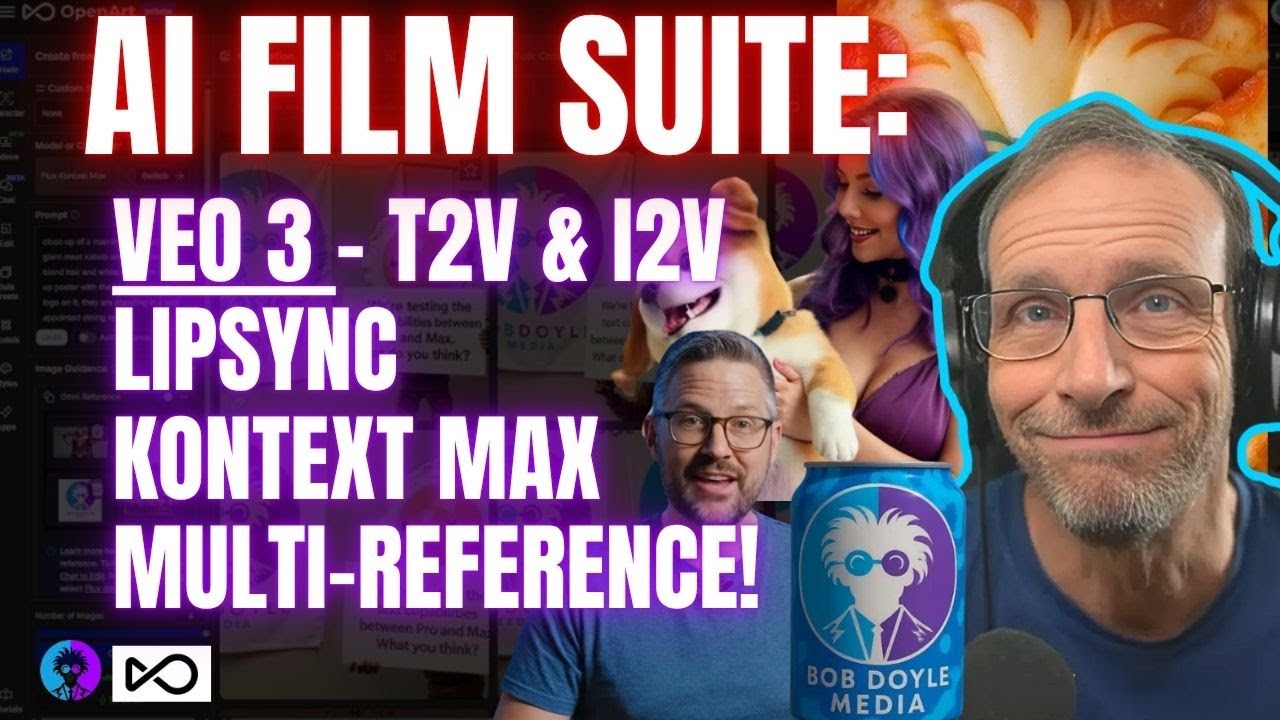The video explores Open Art’s AI tools—Veo 3 (VO3), Cling 2.1, and Multi-Reference Flux context models—highlighting their strengths in realistic video generation, precise lip-syncing, and consistent multi-image integration for dynamic storytelling. It demonstrates how combining these tools enables creators to produce detailed, animated videos with nuanced audio and visual control, despite some limitations in VO3’s audio handling and prompt sensitivity.
The video provides an in-depth exploration of the Open Art platform’s latest AI tools, focusing primarily on Veo 3 (VO3), Cling 2.1, and the Multi-Reference Flux context models. The creator begins by showcasing VO3’s capabilities in text-to-video and image-to-video generation, highlighting its advanced lip-sync features that allow both text-to-speech and custom audio uploads. Despite VO3’s impressive realism and natural audio integration, the presenter notes some glitches such as audio clipping, loudness issues, and occasional dialogue confusion, especially when handling complex prompts or multiple speakers.
To improve VO3 results, the creator experimented with prompt engineering, including consulting ChatGPT for optimized prompt structures. Examples include humorous scenarios featuring Bigfoot and dialogues in various settings, demonstrating both successes and limitations of VO3’s speech accuracy and character differentiation. The video also contrasts VO3’s automatic audio generation with Cling 2.1’s approach, where Cling adds motion to images and allows precise lip-syncing using user-uploaded audio, resulting in clearer and more controlled outputs.
The discussion then shifts to the Flux context models, particularly the new Max model that supports up to four reference images for creating consistent and detailed visuals. The presenter compares the Max and Pro versions, finding that while Max offers better prompt adherence and text accuracy, the differences are sometimes subtle, and Pro occasionally performs better in character consistency. The Flux context models enable creative branding applications by integrating logos and characters into complex scenes, which can then be animated and voiced using the other AI tools.
Further demonstrations include combining Open Art’s elements feature to build videos directly from images and characters without separate image creation steps. The presenter experiments with various scenarios, such as an archaeologist beside a statue and wax figures melting, using different Cling 2.1 models (Master, Pro) to observe variations in animation quality and narrative coherence. These tests reveal the importance of prompt phrasing and model choice in achieving desired visual storytelling effects.
In conclusion, the video emphasizes the synergy between VO3, Cling 2.1, and Flux context models on the Open Art platform, showcasing how they can be used together to produce rich, dynamic AI-generated videos. While VO3 excels in quick, realistic video generation with automatic audio, Cling 2.1 offers greater control over motion and lip-sync, and Flux context models provide powerful image consistency and multi-reference capabilities. The creator encourages viewers interested in AI-driven creative tools to explore these features and subscribe for ongoing content about innovative AI applications.
